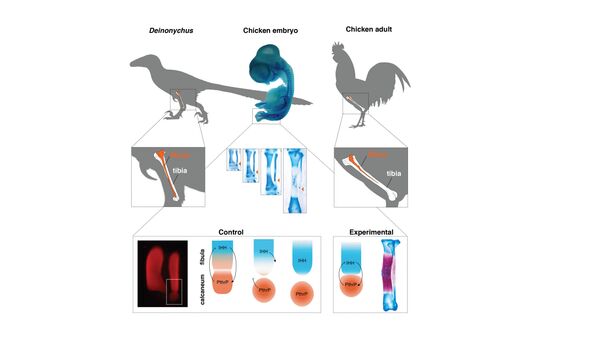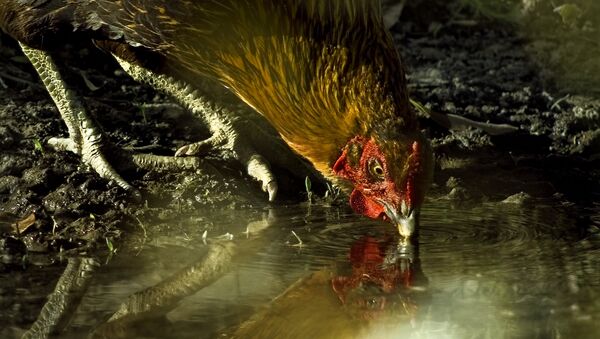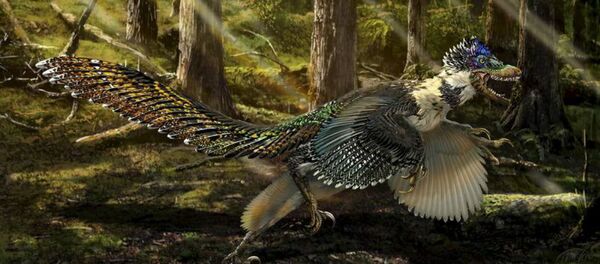"Any one that has eaten roasted chicken can account for the presence in the drumstick (lower leg) of a long, spine-like bone," the researchers wrote in a press release.
"This is actually the fibula, one of the two long bones of the lower leg (the outer one). In dinosaurs, which are the ancestors of birds, this bone is tube-shaped and reaches all the way down to the ankle."
The scientists explained that they wanted to study the mechanisms involved in the evolution of chicken legs from dinosaur legs.
They found that when a maturation gene in chickens called 'Indian Hedgehog' was inhibited, it resulted in chickens that kept a tubular fibula as long as the tibia and connected to the ankle, just like a dinosaur.
In addition to identifying and inhibiting the associated gene, the scientists also observed that the other bone of the lower leg, the tibia, was significantly shorter, a development which suggests that a dinosaur-like fibula connected to the ankle stops the tibia from growing as it would normally.

This observation is consistent with birds' evolution in the fossil record, which shows that the earliest forms to evolve reduced fibulas were toothed birds from the early cretaceous age. These lived alongside dinosaurs and had splinter-like fibulas that did not connect to the ankle, but were almost as long as the tibia.
"The experiments are focused on single traits, to test specific hypotheses," said Vargas.
"Not only do we know a great deal about bird development, but also about the dinosaur-bird transition, which is well-documented by the fossil record. This leads naturally to hypotheses on the evolution of development that can be explored in the lab," he explained.



